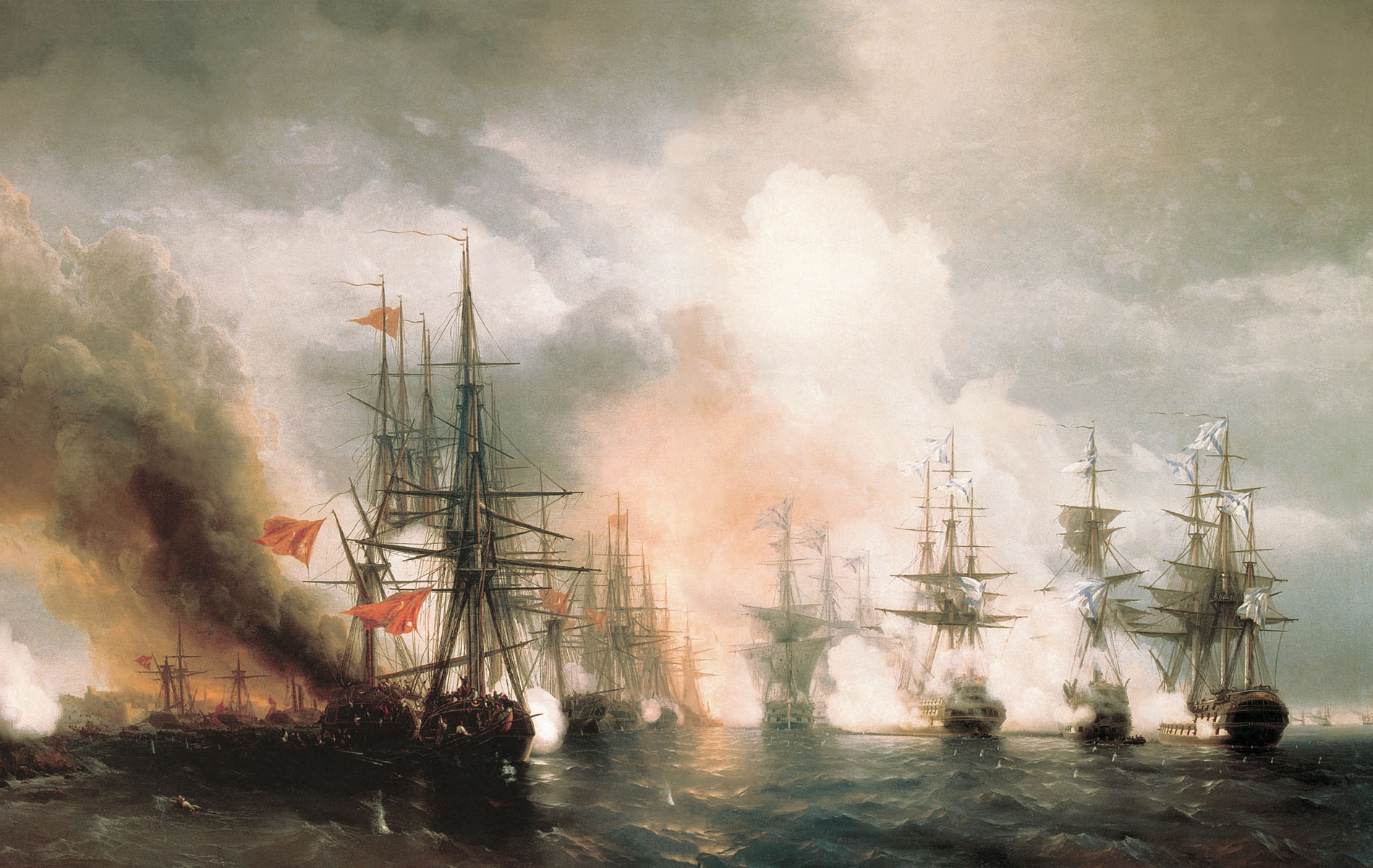|
Russian Ship Sinop
At least two ships of the Imperial Russian Navy have been named ''Sinop'' after the 1853 Russian victory at the Battle of Sinop. * 135-gun, steam-powered, first-rate ship of the line A ship of the line was a type of naval warship constructed during the Age of Sail from the 17th century to the mid-19th century. The ship of the line was designed for the naval tactic known as the line of battle, which depended on the two colu ... built during the 1850s and stricken in 1874. * - built during the 1880s and scrapped by the Soviets in 1922. {{DEFAULTSORT:Sinop Russian Navy ship names ... [...More Info...] [...Related Items...] OR: [Wikipedia] [Google] [Baidu] |
Imperial Russian Navy
The Imperial Russian Navy () operated as the navy of the Russian Tsardom and later the Russian Empire from 1696 to 1917. Formally established in 1696, it lasted until dissolved in the wake of the February Revolution of 1917. It developed from a smaller force that had existed prior to Tsar Peter the Great's founding of the modern Russian navy during the Second Azov campaign in 1696. It expanded in the second half of the 18th century and reached its peak strength by the early part of the 19th century, behind only the British and French fleets in terms of size. The Imperial Navy drew its officers from the aristocracy of the Empire, who belonged to the state Russian Orthodox Church. Young aristocrats began to be trained for leadership at a national naval school. From 1818 on, only officers of the Imperial Russian Navy were appointed to the position of Chief Manager of the Russian-American Company, based in Russian America (present-day Alaska) for colonization and fur-trade developme ... [...More Info...] [...Related Items...] OR: [Wikipedia] [Google] [Baidu] |
Battle Of Sinop
The Battle of Sinop, or the Battle of Sinope, was a naval battle that took place on 30 November 1853 between Imperial Russia and the Ottoman Empire, during the opening phase of the Crimean War (1853–1856). It took place at Sinop, a sea port on the southern shore of the Black Sea (the northern shore of Anatolian Turkey). A Russian squadron attacked and decisively defeated an Ottoman squadron anchored in Sinop's harbor. The Russian force consisted of six ships of the line, two frigates and three armed steamers, led by Admiral Pavel Nakhimov; the Ottoman defenders were seven frigates, three corvettes and two armed steamers, commanded by Vice Admiral Osman Pasha. The Russian navy had recently adopted naval artillery that fired explosive shells, which gave them a decisive advantage in the battle. All the Ottoman frigates and corvettes were either sunk or forced to run aground to avoid destruction; only one steamer escaped. The Russians lost no ships. Nearly 3,000 Turks were killed ... [...More Info...] [...Related Items...] OR: [Wikipedia] [Google] [Baidu] |
First-rate
In the rating system of the British Royal Navy used to categorise sailing warships, a first rate was the designation for the largest ships of the line. Originating in the Jacobean era with the designation of Ships Royal capable of carrying at least 400 men, the size and establishment of first-rates evolved over the following 250 years to eventually denote ships of the line carrying at least 80 guns across three gundecks. By the end of the eighteenth century, a first-rate carried no fewer than 100 guns and more than 850 crew, and had a measurement ( burthen) tonnage of some 2,000 tons. Origins The concept of a rating system for British naval vessels dates to the accession of James I of England, following which the fleet was formally divided into "great", "middling" and "lesser" craft. A 1618 commission of enquiry added a further designation of "Ships Royal" for the largest and most prestigious vessels in the fleet, each capable of carrying at least 400 men. The first Ships Roy ... [...More Info...] [...Related Items...] OR: [Wikipedia] [Google] [Baidu] |
Ship Of The Line
A ship of the line was a type of naval warship constructed during the Age of Sail from the 17th century to the mid-19th century. The ship of the line was designed for the naval tactic known as the line of battle, which depended on the two columns of opposing warships maneuvering to volley fire with the cannons along their broadsides. In conflicts where opposing ships were both able to fire from their broadsides, the opponent with more cannons firingand therefore more firepowertypically had an advantage. Since these engagements were almost invariably won by the heaviest ships carrying more of the most powerful guns, the natural progression was to build sailing vessels that were the largest and most powerful of their time. From the end of the 1840s, the introduction of steam power brought less dependence on the wind in battle and led to the construction of screw-driven wooden-hulled ships of the line; a number of purely sail-powered ships were converted to this propulsion mech ... [...More Info...] [...Related Items...] OR: [Wikipedia] [Google] [Baidu] |


